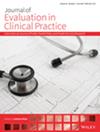Are Canadian Clinical Practice Guidelines Accounting for Adults With Multiple Chronic Diseases? A Systematic Review
Abstract
Rationale
Recommendations that are equipped with essential and adequate information promote adherence and support evidence-informed decision-making, which are crucial attributes of patient-centered care when caring for patients with multiple coexisting health conditions.
Aims and Objectives
To systematically evaluate the content of recommendations of Clinical Practice Guidelines in Canada.
Method
We searched PubMed, MEDLINE, Embase, and professional organization websites to identify 18 Canadian guidelines addressing 14 diseases prevalent in adults with multimorbidity in nonhospital settings. Two reviewers independently appraised the included guidelines using the international AGREE II tool, extracted 2,509 recommendations and assessed each recommendation to determine the presence of primary health outcomes, as well as secondary demographics and the number of involved diseases. We stratified the findings by potential modifiers: level of evidence (LOE) and type of recommendations (e.g., screening and diagnosis).
Results
Half of the guidelines were high-quality, with all domains scoring 50% or higher. The format and definitions of LOE were found to be heterogeneous. A significant portion focused on a single disease (72%), did not include any demographic information (72), or missed health outcomes (66%). Health outcomes were more frequently addressed in pharmacological (17.6%) and Nonpharmacological (14.5%) management recommendations than in screening (0.7%) and diagnosis (1.1%) recommendations.
Conclusion
There is significant variation in guidelines. For health professionals such as primary care whose patients have multiple conditions, this variation is unacceptable. A centralized guideline development agency would reduce inconsistencies in formatting among guidelines, promoting adherence. Recommendations equipped with adequate information are pivotal in supporting patient-centered care through evidence-informed decision-making.
PROSPERO registration: CRD42020105261.


 求助内容:
求助内容: 应助结果提醒方式:
应助结果提醒方式:


